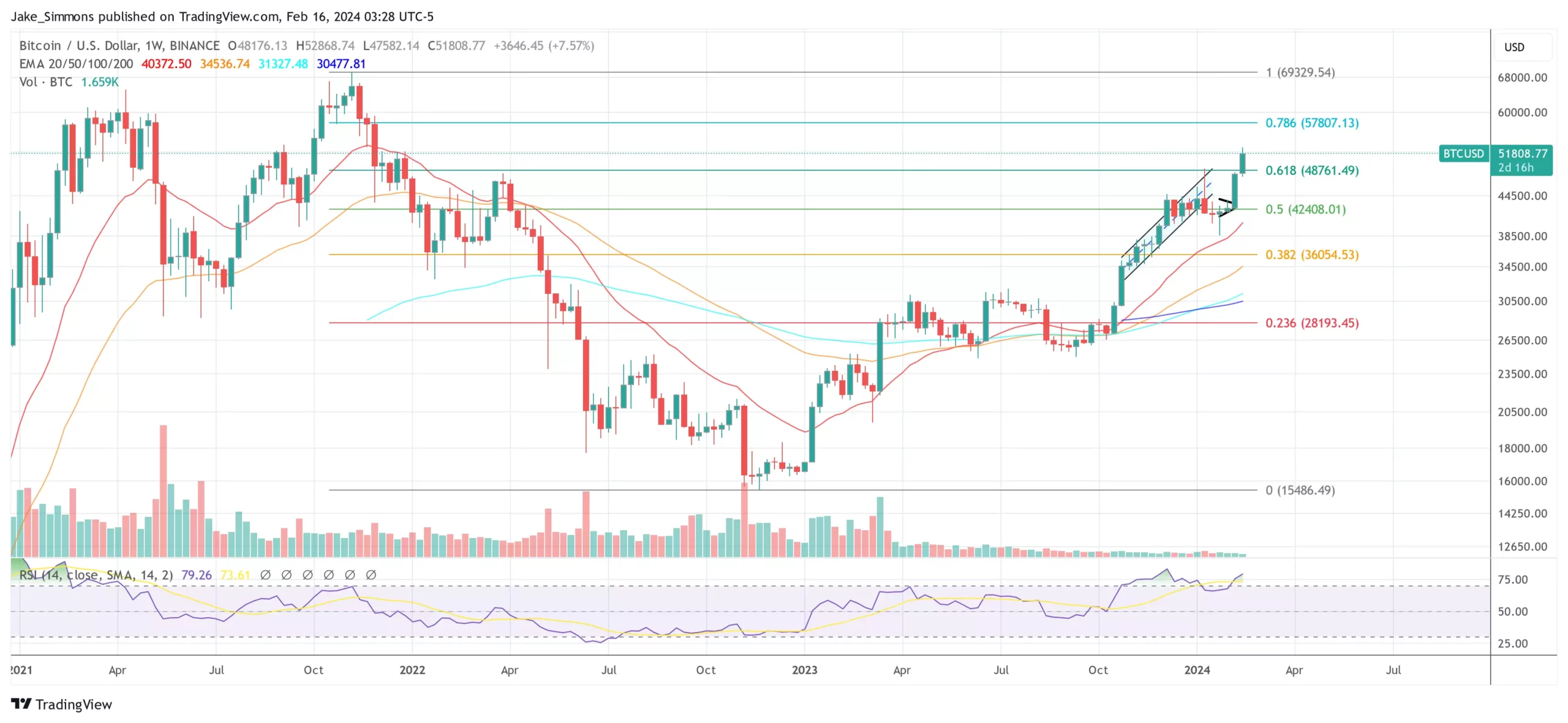The future of spot Bitcoin ETFs and their integration within diversified portfolios was a key topic of discussion at the Exchange ETF conference in Miami Beach. During a conversation with CNBC’s Bob Pisani, Matt Hougan, Chief Investment Officer at Bitwise Asset Management, and Ric Edelman, founder of the Digital Assets Council of Financial Professionals, provided insights into the potential growth and impact of Bitcoin ETFs. Edelman boldly predicted an unprecedented inflow of $150 billion into spot Bitcoin ETFs by the end of 2025, a substantial jump from the current $5 billion.
Edelman’s projection of a $150 billion inflow into spot Bitcoin ETFs implies a major transformation in cryptocurrency investment. This surge in inflows signifies the growing acceptance and interest in Bitcoin among institutional investors and financial advisors. Going from $5 billion to $150 billion in just two years would be a remarkable milestone for the market.
In his analysis, Edelman highlighted the potential inflows from independent financial advisors who currently manage around $8 trillion in assets. Surveys have shown that 77% of these advisors are ready to allocate a portion of their portfolios to Bitcoin ETFs, aiming for an average allocation of 2-3%. Using this data, Edelman calculated that the inflows from these advisors alone could amount to $150 billion. It’s crucial to note that this calculation only takes independent advisors into account, omitting significant potential inflows from wirehouses, regional broker-dealers, and institutional investors.
Matt Hougan emphasized the enduring nature of investments in Bitcoin ETFs made by financial advisors. Unlike the short-term trading often associated with cryptocurrencies, these advisors typically make allocations for the long term, with a holding period of 1, 3, or 5 years. This approach aligns with the conservative nature of many financial advisors who prioritize long-term growth and stability. With independent advisors managing $8 trillion in assets and 77% of them expressing interest in Bitcoin ETFs, the potential inflow of $150 billion seems plausible.
Hougan pointed out that significant flows into Bitcoin ETFs are coming from Registered Investment Advisors (RIAs), family offices, and investors transitioning from other products. This broadening acceptance and recognition of Bitcoin ETFs within the investment community indicates a shift in perception towards cryptocurrencies as viable investment options.
Edelman supplemented his $150 billion inflow projection with an analysis of Bitcoin’s price. He suggested that due to the fixed supply and increasing demand dynamics, Bitcoin’s price could reach $150,000 within two years. It’s worth noting that Edelman intentionally excluded inflows from wirehouses, regional broker-dealers, and institutional investors when making this prediction. This conservative estimate adds credibility to his projection.
Hougan highlighted the regulated, efficient, and investor-friendly nature of Bitcoin ETFs, praising their ability to accurately track prices, provide investors with access to all necessary data, and offer simplicity, security, and low fees. This positive sentiment towards Bitcoin ETFs indicates a broader shift in the market, with increasing recognition of their benefits and attractiveness to investors.
Both Hougan and Edelman agreed on the strategic value of including spot Bitcoin ETFs in investment portfolios for diversification purposes. Bitcoin is viewed as a non-correlated asset, meaning its performance is not directly influenced by traditional market factors. Therefore, when used for rebalancing and managed professionally, Bitcoin ETFs can help mitigate portfolio volatility.
Hougan compared the success of Bitcoin ETFs to traditional gold ETFs, highlighting the competitive fee structure and strong demand for the Bitwise Bitcoin ETF. With fees half that of the largest gold ETF, Bitwise offers financial efficiency and attracts a wide range of investors. This comparison showcases the growing appeal of Bitcoin ETFs as an alternative investment option.
The future of spot Bitcoin ETFs appears promising, with Ric Edelman projecting an unprecedented inflow of $150 billion by the end of 2025. Factors such as independent financial advisors’ readiness to allocate to Bitcoin ETFs, the broadening acceptance within the investment community, and the anticipated impact on Bitcoin’s price contribute to this optimistic outlook. Bitcoin ETFs present a regulated, efficient, and investor-friendly investment avenue, offering diversification benefits and appealing fee structures. As the market continues to evolve, Bitcoin ETFs may establish themselves as a significant and transformative force within the cryptocurrency space.














